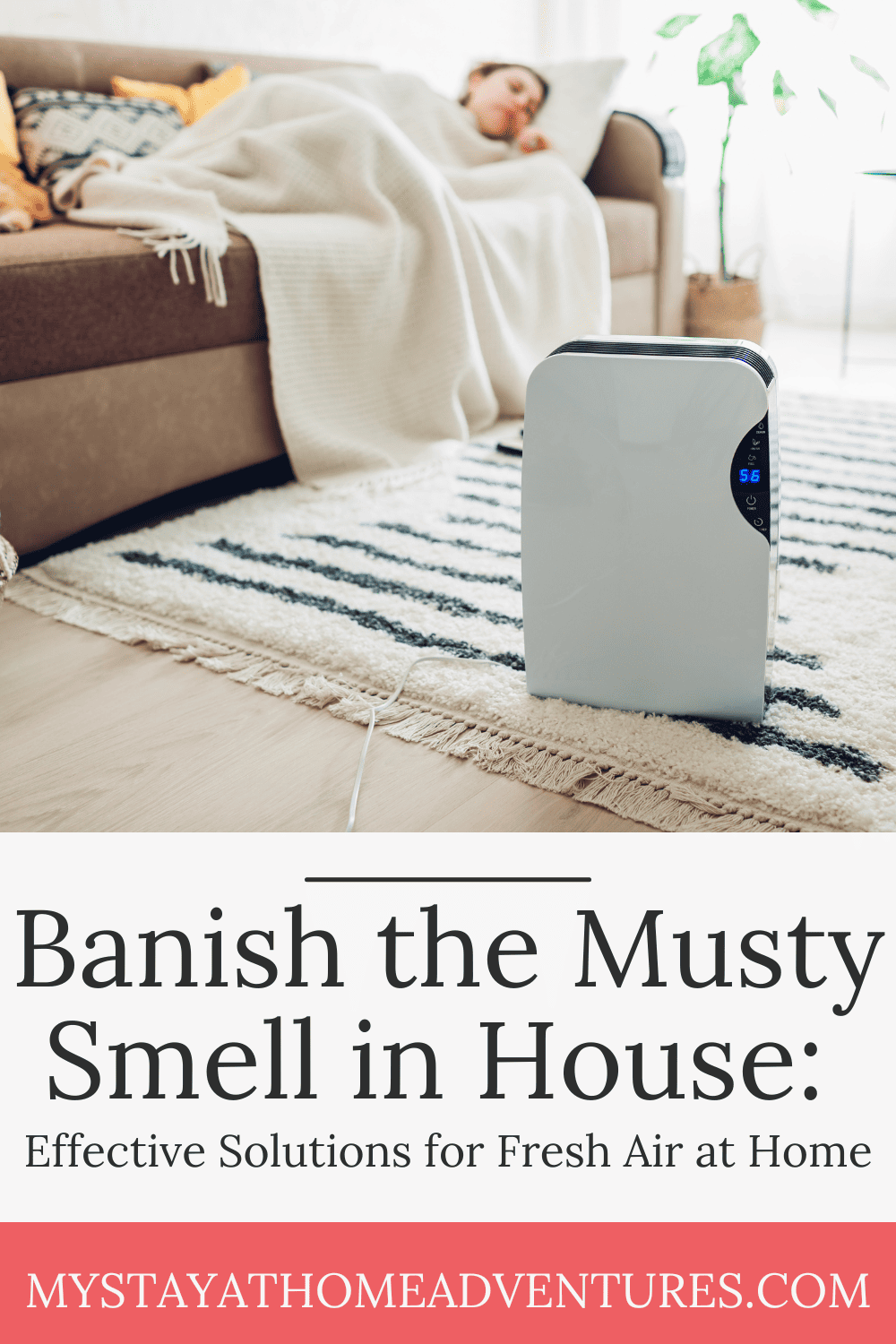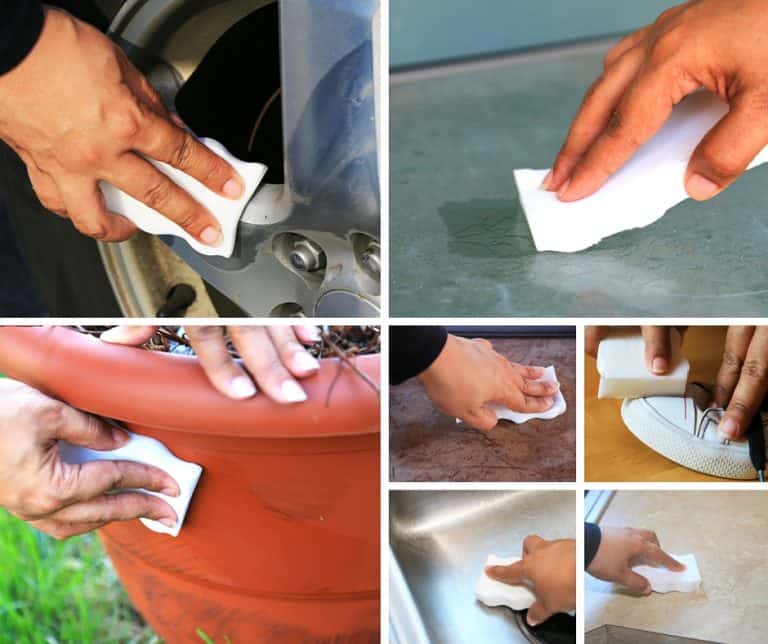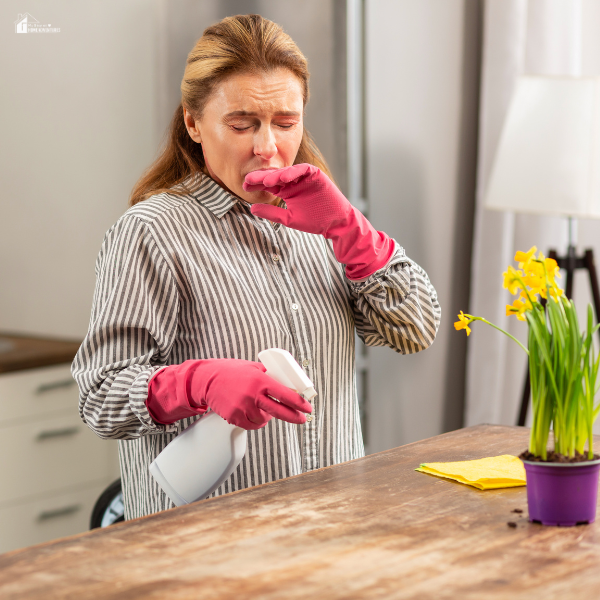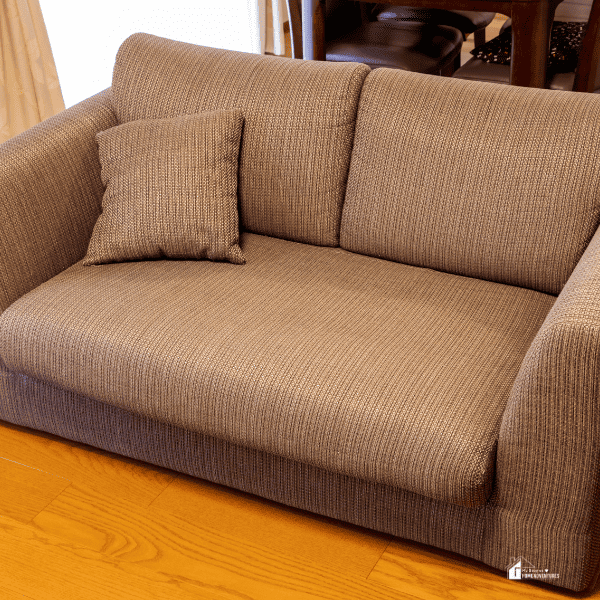Banish the Musty Smell in House
This post may contain affiliate links which might earn us money. Please read my Disclosure and Privacy policies hereStruggling with a “musty smell in house”? You’re not alone. This common issue usually points to mold or mildew lurking in damp, hidden areas of your home. Our guide will help you identify the source of the musty odor and provide effective strategies to eliminate it, ensuring your living space smells fresh and clean.
Key Takeaways
- Musty smells in homes are often caused by mold and mildew thriving in areas with high humidity like basements, under sinks, and within walls.
- Natural remedies like baking soda and vinegar can effectively absorb and combat musty odors, while commercial products may offer a stronger solution with activated charcoal and probiotic cleaners.
- Preventing musty smells requires controlling humidity levels, fixing leaks, and practicing regular maintenance like cleaning HVAC systems, using mold-killing products, and addressing water damage promptly.

Understanding Musty Smells: Causes and Effects
Walking into a room that reeks of mustiness is incredibly discomforting. It’s a lingering odor that’s hard to ignore. Wondering where this unpleasant smell comes from? It’s all down to two culprits: mold and mildew. They thrive in conditions of excessive humidity or moisture, often hidden in your homes, like within walls or under floors due to plumbing leaks. Even your beloved wood cabinets can fall victim to this musty odor if exposed to humidity.
However, the issue extends beyond the foul stench. Mold and mildew pose a bigger problem. Mold reproduces by releasing tiny spores that float through the air and can start growing on wet surfaces indoors. Constant exposure to mold can lead to health issues, such as:
- sneezing
- runny nose
- red eyes
- throat irritation
- asthma attacks in susceptible individuals.
Mold Growth
Mold, a type of fungi, ubiquitously exists both indoors and outdoors, with species estimates ranging from tens of thousands to perhaps over three hundred thousand. It thrives in damp, poorly ventilated areas. If your home has water leaks or other moisture problems, it’s like rolling out the red carpet for mold growth. Some common areas where mold can grow include:
- Basements
- Bathrooms
- Attics
- Crawl spaces
- Under sinks
- Behind walls
It’s important to address any moisture issues in these areas to prevent mold growth and trap moisture effectively.
Recognizing mold is generally uncomplicated. It often presents in darker colors like deep green or black, and may develop a fuzzy texture. What’s even more alarming is that it can start growing on a damp surface within 24 to 48 hours. A quick response is essential to prevent it from turning into a full-blown infestation.
Mildew Growth
What about mildew, you may ask? Mildew is a form of mold, known for its thin growth that can appear black or white. It starts as white patches that can turn brown or gray, spreading across surfaces in a flat pattern with a powdery or downy texture.
Mildew flourishes in warm, humid, poorly illuminated areas with stagnant air like cellars, crawl spaces, and even your wardrobe. It can grow on a variety of materials, including:
- cotton
- linen
- rayon
- silk
- wool
- leather
- wood
- paper
But don’t worry, many synthetic fibers tend to resist it. However, the presence of mildew can lead to musty odors, discoloration of fabrics, and deterioration of materials, sometimes resulting in them rotting away.
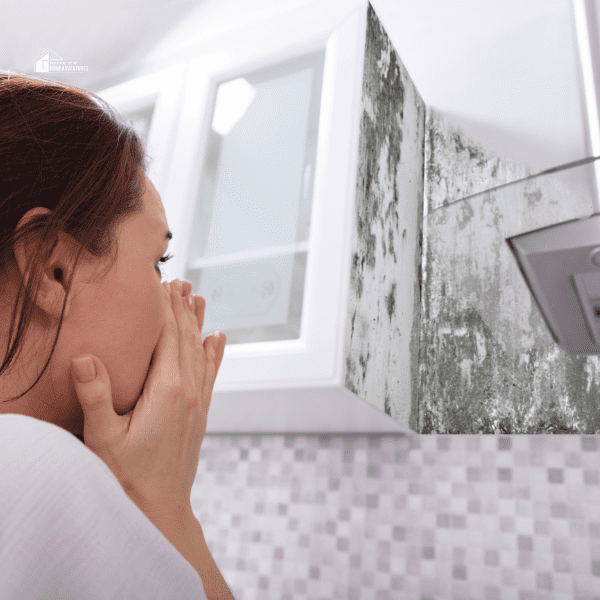
Identifying Problem Areas: Where Musty Smells Lurk
Understanding the causes of musty smells is important, but identifying their hiding spots is equally crucial. Musty odors in homes often originate from basements, indicating the presence of mold or mildew. Bathrooms, especially shower stalls and areas with leaks, are also common culprits for developing a smell that smells musty.
But don’t stop your investigation there. Musty smells can also be found in:
- Bedrooms and living areas around window seals due to leaks
- Under potted plants that leak water
- Attics, garages, and areas around water heaters and vents
These areas should also be checked for dampness with a damp cloth, as they can be sources of musty odors.
And don’t forget to check your kitchen, especially around sinks, dishwashers, and under refrigerators or other water-utilizing appliances. Even your laundry room and laundry hampers can contribute to the musty smell if damp items are left inside them.
Effective Solutions for Eliminating Musty Smells
Having identified the problem and its sources, let’s address the core issue – how to eradicate these musty smells, including the unpleasant wood smell?
Let’s explore some effective solutions, both natural remedies and commercial products.
Natural Remedies
A quick look into your kitchen pantry might reveal one of the most potent natural remedies for absorbing musty smells – baking soda. Placing a bowl of baking soda inside cabinets or musty areas can help combat the smell. For best results, leave it in the cabinet for at least one week.
Another common household item, vinegar, can also help address musty smells in the home. From using it to lift musty odors in your basement to adding it to your washing machine, vinegar is a versatile and natural solution to your musty smell problems.
Commercial Products
If natural remedies prove ineffective, there’s no need for worry. Commercial products can offer a strong defense against musty odors. Many commercial odor absorbers contain activated charcoal, which is effective in trapping and neutralizing musty odors.
Probiotic cleaners offer a unique way to combat odors by depositing beneficial bacteria that continue to clean and deodorize surfaces over time. These bacteria work by breaking down microbial volatile organic compounds, which are the source of many unpleasant odors. For deep cleaning of moisture-tolerant surfaces, commercial products like the Z BioScience Multi-Task Cleaner address heavy soil and odors effectively. Following up with a product like Z BioScience EnviroMist ensures that a probiotic barrier is established to continue resisting odors after the initial application.

Preventive Measures: Keeping Musty Smells at Bay
Having dealt with the musty smell, the next question is – how can you stop it from making an unwanted reappearance? Let’s talk about preventive measures, from proper ventilation and humidity control to regular maintenance.
Humidity Control
The keyword here is ‘control’. Controlling humidity levels and addressing moisture problems can prevent mold and mildew growth. High humidity, especially in basements and bathrooms, leads to musty odors due to mildew and mold growth in damp conditions.
In cold climates, maintaining lower indoor humidity is necessary to prevent condensation on windows and walls which can contribute to rot and the growth of mildew and mold. Indoor mold growth can be controlled by fixing leaks and drying water-damaged areas quickly, within 24-48 hours, to prevent mold spores from growing. Regular repair of leaks and control of excess moisture is the most effective way to prevent musty smells from mold and mildew.
Regular Maintenance
Though humidity control is indispensable, consistent maintenance shares an equally vital role in suppressing musty odors. Regular cleaning schedules for dusting every surface and keeping spaces decluttered avoid moisture traps that could cause musty smells.
Also, you should:
- Clean your HVAC system and ductwork to avoid dirt and debris accumulation, which might result in moisture retention and subsequent musty odors during system operation.
- Use mold-killing products proactively in known problem areas.
- Consider applying mold-inhibiting paints during renovations to prevent mold spore growth and the resulting musty smells.
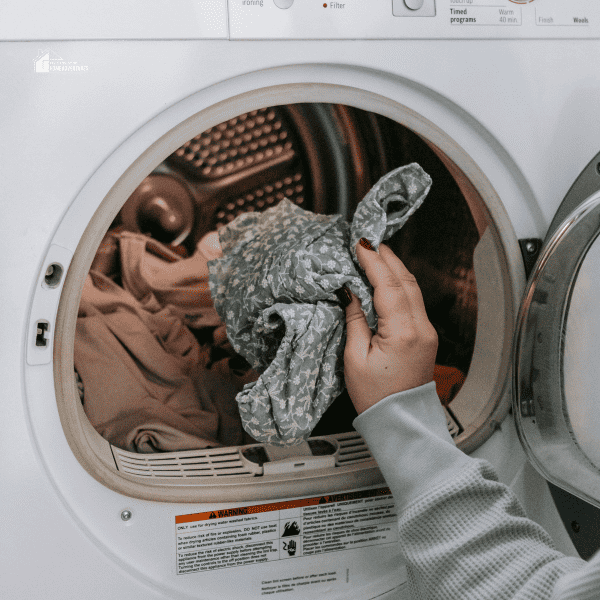
Tackling Musty Smells in Clothes and Textiles
What about the musty odors in your clothes and textiles? They too can harbor musty smells. Let’s explore how to tackle these through proper laundry practices and furniture care.
Laundry Tips
Selecting an appropriate laundry detergent is key to preventing musty odors in apparel. Heavy-duty laundry detergents help trap dirt and oil to keep clothes fresh and prevent re-deposition on the fabric. Adding vinegar to the wash can aid in smell removal, but remember it might affect detergent performance and stain removal.
Detergents tailored to combat hard water can prevent musty smells by preventing towel stiffness and keeping colors vibrant. And let’s not forget, prompt removal of clothes from the washing machine after washing and avoiding leaving damp items in a pile are effective practices to keep musty smells at bay.
Ensuring clothes are thoroughly cleaned with a quality detergent prior to storage is an important step in preventing musty odors.
Furniture and Upholstery Care
Without proper care, your wood furniture and upholstery could also become a breeding ground for musty odors and lingering odors. Applying dryer sheets or sprinkling baking soda on old furniture can help remove musty odors, while letting in some fresh air can further improve the situation. Using a spray bottle filled with a suitable cleaning solution can also be helpful in tackling these odors.
Maintain a regular cleaning schedule for dusting every surface and keep spaces decluttered to avoid moisture traps that could cause musty smells. Ensure your HVAC system and ductwork are cleaned to prevent dirt and debris build-up that can cause moisture retention and contribute to musty odors when the system operates.
Use mold-killing products proactively in known problem areas and consider applying mold-inhibiting paints during renovations to prevent mold spore growth and the resulting musty smells.
Summary
So there you have it, your comprehensive guide to banishing musty smells from your home. From understanding the causes and effects of musty smells, identifying problem areas, through to effective solutions and preventive measures, you’re now equipped with the knowledge to freshen up your living space. Remember, combating musty odors is not just about eliminating the unpleasant smell but also about maintaining a healthy environment for you and your loved ones.

Frequently Asked Questions
Can a house smell musty without mold?
Yes, a house can smell musty without mold. Musty odors can be caused by factors such as mildew, high humidity, leaky pipes, or exposed dirt in the crawlspace. These factors contribute to moisture buildup and can create a musty smell in the house.
Who do you call for musty smell in house?
You can call professional home inspectors or HVAC experts like Aire Serv to help with a musty smell in your house. They can test for issues, clean air ducts, and provide solutions to improve indoor air quality.
How do you get rid of a musty smell?
To get rid of a musty smell, open windows for ventilation, use a dehumidifier, and keep air circulating with fans. Regular ventilation is key, so consider using an air purifier and keeping the house dry to eliminate the odor.
What causes musty smells in homes?
Musty smells in homes are often caused by mold and mildew thriving in conditions of excessive humidity or moisture, as well as hidden plumbing leaks. Be sure to address the source of moisture to get rid of the musty odor.
How can I identify areas in my home where musty smells might originate?
Check your basements, bathrooms, bedrooms, and living areas around window seals for musty odors. Also, don't forget to inspect under potted plants that may leak water and areas around water heaters and vents.


